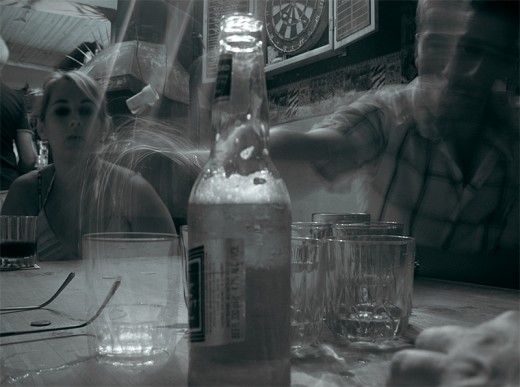Teen Drinking in America Today
As a country with one of the highest age requirements for the purchase alcohol in the world, the United States may seem like the place where issues with teen drinking shouldn't be much of a concern. The theory is, if you raise the minimum age wherein someone could purchase alcohol, it is less likely that the older crowd would purchase the product for a much younger group.

However, recent statistics show that teenage drinking in the United States is at an all-time high, and is responsible for almost 5,000 adolescent deaths annually.
Alcohol is the most widely used mind-altering substance by teens in the United States, far surpassing tobacco and illicit drugs, and is the cause of an average of over 4,700 deaths of teenagers annually. Although the legal age to buy alcohol in the US is officially 21, more than 11% of all alcohol purchased is consumed by youths under the age of 21.
According to a study by the Institute of Medicine at the National Academy of Science, the cost to the US from underage drinking has reached over $53 billion every year.
In 2010, 48% of U.S. 12th Grade students admitted to abusing alcohol within the last 30 days. One out of 4 of these students admitted that, within the last two weeks, they were guilty of binge-drinking which, according to the Centers for Disease Control, means drinking 5 or more alcoholic drinks in 2 hours, or having a blood alcohol content of .08% or above
Taking risks with binge-drinking can lead to these and several other physical problems, many of which can last for years or even for the rest of ones life. The most terrifying risk is, of course, death, whether by overdosing on alcohol, or by decisions made with impaired judgment, or by placing oneself in high-risk situations. Teenagers are not generally known for making wise life choices, and when ambition and recklessness combine with copious amounts of alcohol, many problems are likely to ensue.
Psychological Risks of Binge Drinking
There are many psychological risks from excessive drinking that American teenagers may face, such as:
- Unintentional injuries (e.g., car crashes, falls, burns, drowning)
- Intentional injuries (e.g., firearm injuries, assault, domestic violence)
- Sexual Assault
- Sexually transmitted diseases
- Unintended pregnancy
- Children born with Fetal Alcohol Spectrum Disorders
Physical Risks Of Binge-Drinking
There are many risks associated with binge drinking frequently. The CDC lists many risks of this toxic habit, such as:
- Alcohol poisoning
- High blood pressure, stroke, and other cardiovascular diseases
- Liver disease
- Neurological damage
- Sexual dysfunction, and
- Poor control of diabetes
- Permanent Memory loss
- And many more...


Many of these teenagers who are barely old enough to vote put themselves at serious risk every time they drink to excess. As of a 2007 National Survey on Drug Use and Health, over 7.2 million teens admitted to binge drinking, and experts believe that this number has grown exponentially in recent years. Former Surgeon General Kenneth Moritsugu wrote about this survey, that it is likely that excess alcohol use at such a young age may harm or impede brain development during these important formative years.
There are many different factors which may cause teens to drink, which makes finding a remedy very difficult. Teens may develop alcoholism or participate in these risky behaviors because of a hereditary or genetic predisposition, environment in which they grew up, or their own personal reaction to the events and changes which take place during adolescence.
There are currently two schools of thought for preventing and remedying this behavior. One approach is to change the environmental factors, such as raising the price of alcohol, increasing the drinking age further (many experts believe the age when one can purchase alcohol should be raised to 25), and increasing penalties for possessing or consuming alcohol underage. However, these approaches have been met with much opposition.
Is Underage Drinking Really Worth It?

The other approach is a more personal one. Researchers, including psychiatrists and substance abuse counselors from the National Institute for Alcohol Abuse and Alcoholism, believe that approaching teens in the home and school environment is the safest and most effective route. Researchers believe if parents become more involved in educating their children about the dangers of excess alcohol use at a young age, this would discourage many teens to drink in an effort to solve or forget about their problems.
School programs formerly used scare tactics to discourage teens from drinking however, these proved to be highly ineffective. Today, school programs focus on increasing awareness of the social pressure to drink, and of the resources available to help teens who do drink or feel pressured to drink to excess.
Teenage drinking an ever-present and ever-growing problem in the United States today. It is important that parents, teachers, lawmakers, and the average person do not take this lightly, but rather takes the necessary precautions to ensure the health and safety of the next generation of US citizens.









